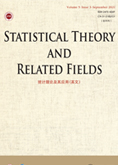References
- Acworth, P., Broadie, M., & Glasserman, P. (1996). A comparison of some Monte Carlo and Quasi Monte Carlo techniques for option pricing. M. Carlo & Q.-M. Carlo Methods, Springer. [Google Scholar]
- Faure, H. (1982). Discrepence de suites associees a un systeme de numeration (en dimension s) Acta Arithmetica, 41, 337. [Google Scholar]
- Halton, J. H. (1960). On the efficiency of certain quasi-random sequences of points in evaluating multi-dimensional integrals. Numerische Mathematik, 2, 84–90. [Google Scholar]
- Heath, D., Jarrow, R., & Morton, A. (1992). Bond pricing and the term structure of interest rates: A new methodology for contingent claims valuation. Econometrica, 60(1), 77–105. [Google Scholar]
- Mallat, S. (2008). A wavelet tour of signal processing, third edition: The sparse way. Academic Press. [Google Scholar]
- Morokoff, W. J., & Caisch, R. E. (1995). Quasi-Monte Carlo integration. Journal of Computational Physics, 122, 218–230. [Google Scholar]
- Niederreiter, H. (1973). Application of diophantine approximations to numerical integration. In C. F. Osgood, (Ed.), Diophantine approximation and its applications (pp. 129–199). New York: Academic Press. [Google Scholar]
- Niederreiter, H. (1978). Quasi-Monte Carlo methods and pseudo-random numbers. Bulletin of the American Mathematical Society, 84, 957–1041. [Google Scholar]
- Niederreiter, H. (1988). Low-discrepancy and low-dispersion sequences. Journal of Number Theory, 30, 51–70. [Google Scholar]
- Niederreiter, H. (1988). Quasi-Monte Carlo methods for multidimensional numerical integration. In H. Brass & G. Hämmerlin (Eds.), Numerical integration III, international series of numerical math., (Vol. 85). Basel: Birkhäuser Verlag. [Google Scholar]
- Niederreiter, H. (1992). Random number generation and Quasi-Monte Carlo methods. Volume 63 of SIAM CBMS-NSF Regional Conference Series in Applied Mathematics. Philadelphia: SIAM. [Google Scholar]
- Santa-Clara, P., & Sornette, D. (2001). The dynamics of the forward interest rate curve with stochastic string shocks. Review of Financial Studies, 14(1), 149–185. [Google Scholar]
- Sobol’, I. M. (1967). On the distribution of points in a cube and the approximation evaluation of integrals. USSR Computational Mathematics and Mathematical Physics, 7(4), 86–112. [Google Scholar]
- Wang, X., & Fang, K.-T. (2003). Effective dimension and quasi-Monte Carlo integration. Journal of Complexity, 19, 101–124. [Google Scholar]














 loading......
loading......